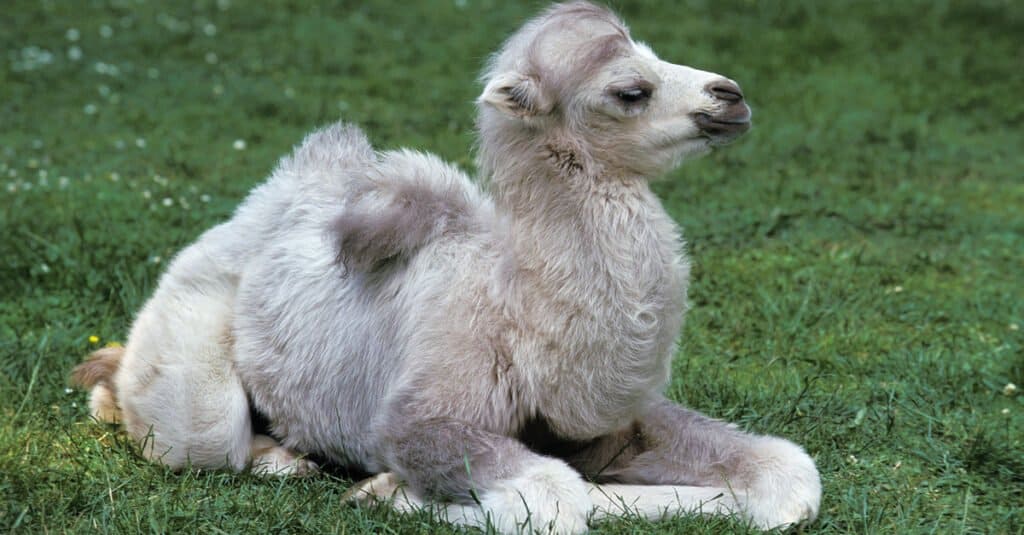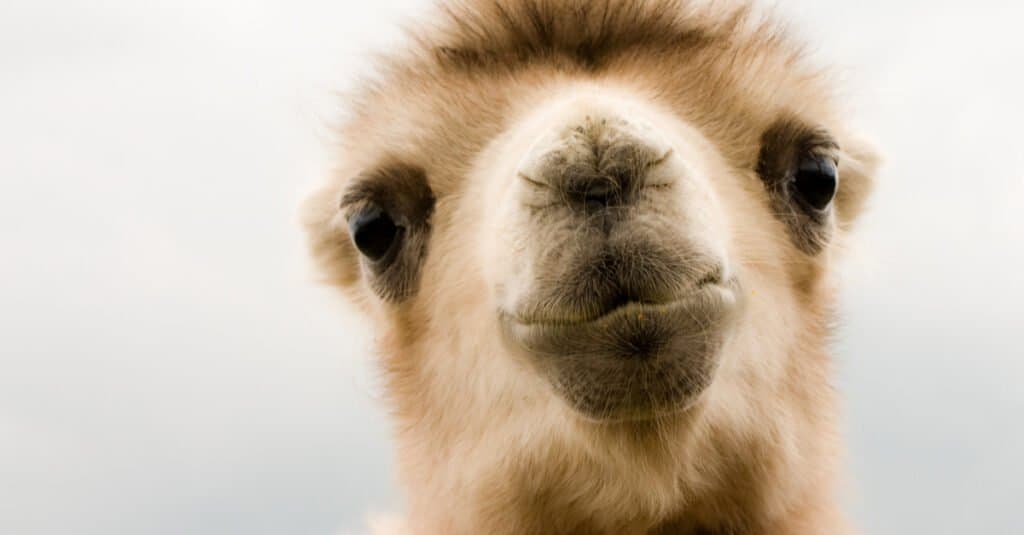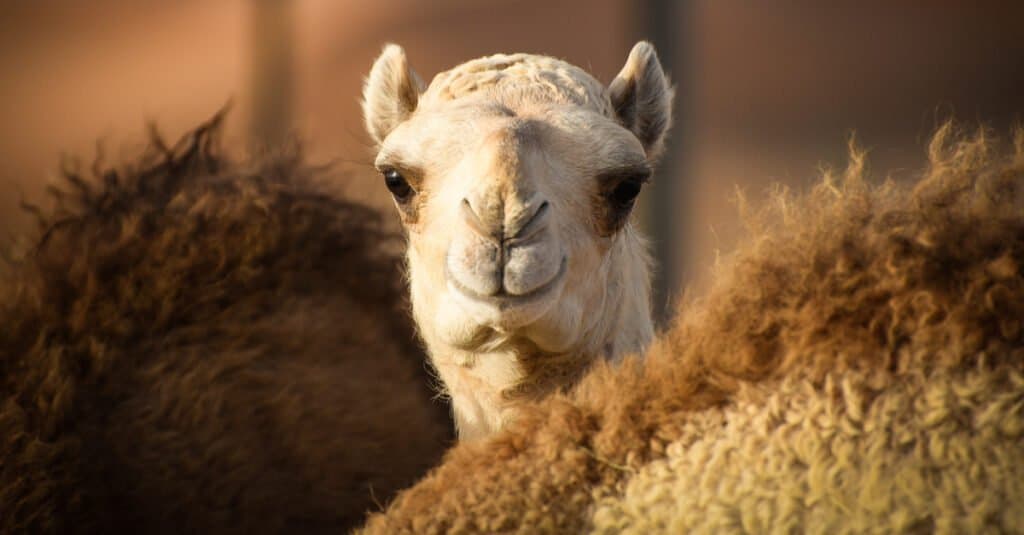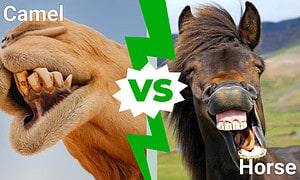Baby camel calves are interesting, multi-faceted creatures with so many interesting things about them. You might be surprised to learn that they don’t store water in their humps and that they’re some of the longest gestating mammals on Earth.
Keep reading to check out five astounding facts and pictures of the baby camel!
#1: A Baby Camel is Called a Calf!

Camel
babies are called
calves!
©Vastram/Shutterstock.com
Baby camels are mammals that depend on their mothers from birth for survival. Like many other mammalian creatures, a baby camel is called a calf. A few examples of animals that share this name are baby elephants, baby cows, and even baby giraffes!
#2: Baby Camel Calves Have Impressive Eyelashes

Camels have long eyelashes, thick eyebrows, and clear eyelids to protect their eyes from sand.
©slowmotiongli/Shutterstock.com
If you were to look at a baby camel up close, you would notice their thick eyebrows and extensively long lashes. This might make the adorable mammals resemble a beauty queen, but these features are a means of survival for the animals.
Baby camel calves live in the desert, where there is lots of sand. This means that debris is constantly flying through the air all around them. Thanks to the baby camel’s long eyelashes and thick eyebrows, they can protect themselves from being blinded by flying sand. These adaptations also protect these vital organs from injury, as well.
Camel calves’ eyelashes and eyebrows aren’t the only things that protect them from their environment. Additionally, they have flaps in their nostrils that they can close at will to prevent sand from entering their passageways. Baby camels instinctually know how to use these organs, so they are well-protected from their environment from the moment they are born.
#3: Camel Calves Don’t Have Humps

Since camel humps store fat, camel calves must gain weight to get them.
©Radka Tesarova/Shutterstock.com
Perhaps one of the camels’ most widely recognized features is their humps. You might be surprised to learn, then, that baby camel calves are born without them. It’s also a common misconception that these appendages are used to carry water. Here’s why:
The truth about camels’ humps is that they aren’t filled with water at all. Instead, they are used to store fat. These fat stores can be used to keep the animal cool or can be converted into calories or water when needed. Baby camels must gain weight before they can pack the pounds into their humps, which is why they are born without them.
Did you know that a baby camel can go up to 15 days without water? Since we know that camel humps don’t store water, this is made possible by another anatomical function. One contributing factor is their exceptionally good kidneys. Baby camels can absorb much more moisture out of the water than other animals. So much so, in fact, that their pee is syrupy due to the lack of water in it. They also have special red blood cells that help their bodies absorb water extremely well.
#4: Camel Calves are Close with their Mothers

Camel calves stay with their mothers for about three to five years.
©Kertu/Shutterstock.com
The ultimate goal in nature is for babies to eventually venture out on their own. Some animals, like the baby camel, prefer to spend plenty of time with their mothers before this happens. The average baby camel and mother spend about three to five years together before splitting up.
When a mother camel is ready to give birth, she leaves the herd to escape to a private location. Once her baby arrives, she patiently waits for him to walk, which usually takes about 30 minutes. Even though baby camels can travel adequately at just a few hours old, the pair won’t return to the herd for about two weeks.
Baby camels also spend a prolonged amount of time nursing compared to other mammals. Typically, camel calves nurse from their mothers for about a year before weaning. Once weaned, they depend on their mothers to teach them how to find food. Since food in the desert is scarce, camel calves aren’t picky and eat just about anything they can find, including twigs and shrubs.
#5: Baby Camels Gestate for an Exceptionally Long Time

Camels are in the top ten for the longest gestation period of all mammals.
©Mrali/Shutterstock.com
When it comes to gestation, mother camels are in it for the long haul. In fact, these amazing creatures are among the mammals with the longest gestation period on Earth. Though elephants remain in the #1 spot with a 645 day gestation period, camels come in at #8.
Female camels are pregnant for about 12 to 14 months before giving birth. Scientists say it’s important for their bodies to nurture the baby slowly since the resources in the desert where they live are scarce. Having a prolonged pregnancy reduces the stress that child-rearing places on a mother camel’s body.
Mother camels almost always give birth to a single baby. While twin pregnancies are possible, there is only about a 0.4% chance of that happening. By comparison, there is approximately a 3% chance of a human pregnancy resulting in twins.
The photo featured at the top of this post is © Mrali/Shutterstock.com
Thank you for reading! Have some feedback for us? Contact the AZ Animals editorial team.






